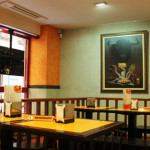The Battle of Hue – what you must know before visiting Hue

While doing research for this article – ‘What you must know before visiting Hue’, I learnt that we had visited Hue without understanding the important role it played in history. The key event was ‘The Battle of Hue’, which took place during the Vietnam war. While the Allies were victorious in the war, the ‘Battle of Hue’ was a turning point, when the losses negatively affected the American public’s perception of the war, and political support for the war began to wane.

According to Wikipedia, the Battle of Huế, was one of the bloodiest and longest battles of the Vietnam War. In February 1968, in the South Vietnamese city of Huế, 11 battalions of the Army of the Republic of Vietnam (ARVN), four U.S. Army battalions, and three understrength U.S. Marine Corps battalions, for a total of 18 battalions, defeated 10 battalions of the People’s Army of Vietnam (PAVN or NVA) and the Viet Cong (VC).

Considering its logistical value and its proximity to the DMZ (only 50 kilometres (31 mi)), Huế should have been well-defended, fortified, and prepared for any communist attack. However, the city had few fortifications and was poorly defended. The South Vietnamese and U.S. forces in the city were unprepared when the Viet Cong and the PAVN launched the Tet Offensive, attacking hundreds of military targets and population centers across the country, including Huế.
The PAVN/Vietcong forces rapidly occupied most of the city. Over the next month, they were gradually driven out during intense house-to-house fighting led by the Marines and ARVN. In the end, although the Allies declared a military victory, the city of Huế was virtually destroyed, and more than 5,000 civilians were killed (2,800 of them executed by the PAVN and Viet Cong, according to the South Vietnamese government). The communist forces lost an estimated 2,400 to 8,000 killed, while Allied forces lost 668 dead and 3,707 wounded.
In addition to the significant civilian casualties inflicted in the battle, eighty percent of the city was destroyed and 116,000 civilians out of the pre-battle population of 140,000 were made homeless.

The Travelling Squid’s Take
I used to question the role history had in my travels. Close to a decade ago, I read the ‘Lonely Planet India’ guidebook, from cover to cover, but today, I don’t remember much of its history. I do remember some broad strokes, but I can’t remember for instance, why certain ancient temples were built. But films like ‘The Post‘ remind me of why it is important to understand history, and how each episode was instrumental to the chain of events that followed. It is also saddening to note that while a few hundred American lives were lost in the Vietnam War, the Vietnamese lost more than a thousand lives, and there was extreme hardship among its citizens.
In the upcoming posts, you will learn with great relief that Hue is back to being a bustling city, home to an elegant Imperial City with well-trimmed gardens. It almost seems that time had served to heal cracks and destruction that war had left behind. But it if you look closely at the crumbling walls in some parts, there’s a mix of melancholy tinged with hope.





